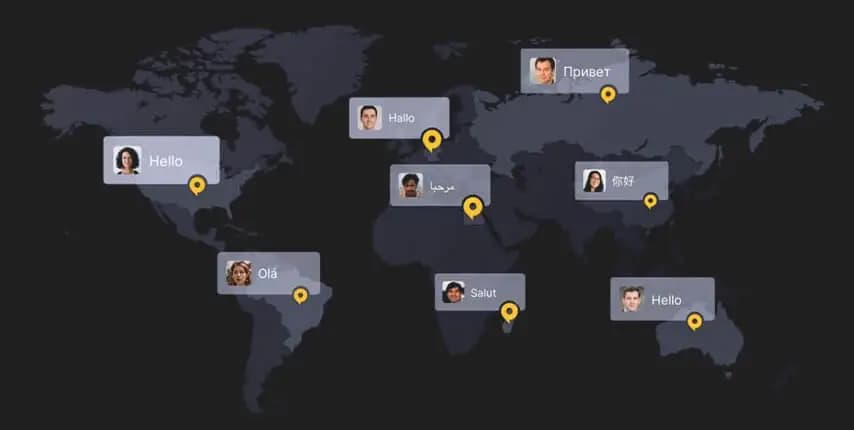The Global Surge: How Rising Internet Speed is Fueling the Localization Industry
The world is more connected than ever. A pivotal 2019 report from We Are Social revealed that 4.4 billion people—57% of the global population—were active internet users. This represents a staggering growth rate of 9.1% from the previous year, adding over 367 million new users.
This massive shift online has created an insatiable appetite for digital content, from streaming video to online gaming. But accessing rich, high-quality multimedia requires one crucial thing: speed. As internet infrastructure improves globally, it doesn’t just mean faster downloads—it’s fundamentally reshaping the opportunities for content creators and the localization industry that serves them.
This article explores how internet speeds have evolved across different regions and the direct impact this has on the multimedia and game localization markets.
The Global Acceleration: A Look at the Data
Internet speed isn’t just improving; it’s skyrocketing. According to Cisco’s Annual Internet Report, global average fixed broadband speeds jumped from 45.9 Mbps in 2018 to 110.4 Mbps in 2023, representing a compound annual growth rate (CAGR) of 20%.
However, this growth is not uniform. The data reveals a dramatic story of regional evolution:
- Established Leaders: Regions like North America and Asia Pacific maintain high speeds, setting the standard for HD and 4K content consumption.
- Rapidly Emerging Markets: Latin America, the Middle East, and Africa are seeing the most explosive growth (CAGRs of 30% and 33%), representing massive new audiences coming online with increasingly capable connections.
This global acceleration is tearing down the technical barriers that once limited content consumption in many parts of the world.
Impact on the Multimedia Localization Industry
Multimedia localization is the complex process of adapting video, audio, and interactive content for a global audience. It involves:
- Transcription & Translation
- Subtitling & Closed Captioning (SDH)
- Voice-Over & Dubbing
- Cultural Adaptation
The rise of streaming giants like Netflix, Disney+, Amazon Prime, and HBO Max has created a content war fought on a global battlefield. These platforms have specific bandwidth requirements:
- 3 Mbps for Standard Definition (SD)
- 5 Mbps for High Definition (HD)
- 25 Mbps for 4K Ultra HD
Just a few years ago, the average speeds in many regions (see Table 1) were too low for a reliable HD experience. Today, with global averages surpassing 110 Mbps, hundreds of millions of new consumers can seamlessly stream high-quality video.
This creates a powerful domino effect:
- Faster Internet → More people subscribe to streaming services.
- More Subscribers → Platforms need more content to compete.
- More Content → Platforms must localize it for international markets to maximize ROI.
- Increased Localization → Higher demand for professional multimedia localization services.
Impact on the Game Localization Industry
The effect on gaming is even more profound. Gamers require low-latency, high-speed connections not just to download large game files, but also for seamless online multiplayer experiences.
As internet speeds have climbed globally, the digital distribution of games through platforms like Steam, Epic Games Store, and Origin has exploded. The data shows that as connectivity improves, gamers purchase and download more games.
For game developers and publishers, this means:
- New Market Access: They can now reliably reach gamers in regions previously hampered by poor connectivity.
- Revenue Growth: Tapping into these emerging markets directly translates to increased sales.
This expansion is a boon for the game localization industry. To succeed in these new territories, games must be fully localized—not just translated, but culturally adapted. This includes:
- Translating in-game text and dialogue
- Localizing marketing assets and store pages
- Adapting content for cultural sensitivities
- Providing localized customer support
The mobile gaming market, already the largest gaming segment, is a key beneficiary. With over 5.1 billion mobile users worldwide, the growth in mobile network speeds (forecast to reach a global average of 43.9 Mbps by 2023) ensures that high-fidelity, data-rich mobile games can be played by a global audience, further intensifying the need for localization.
Conclusion: The Time to Localize is Now
The data is clear: the world is getting faster. The technical barriers that once limited the global distribution of multimedia and games are crumbling. This isn’t just a story about megabits per second; it’s a story about market access, audience engagement, and global growth.
For content creators and producers, this evolution presents an unprecedented opportunity. If you want your game, video, or application to compete on the world stage, localization is no longer an optional expense—it’s a critical investment.
The question is no longer if you should localize, but how quickly you can start.
Sources: We Are Social “Digital 2019” Report, Cisco Annual Internet Report (2018–2023), GameScan.









